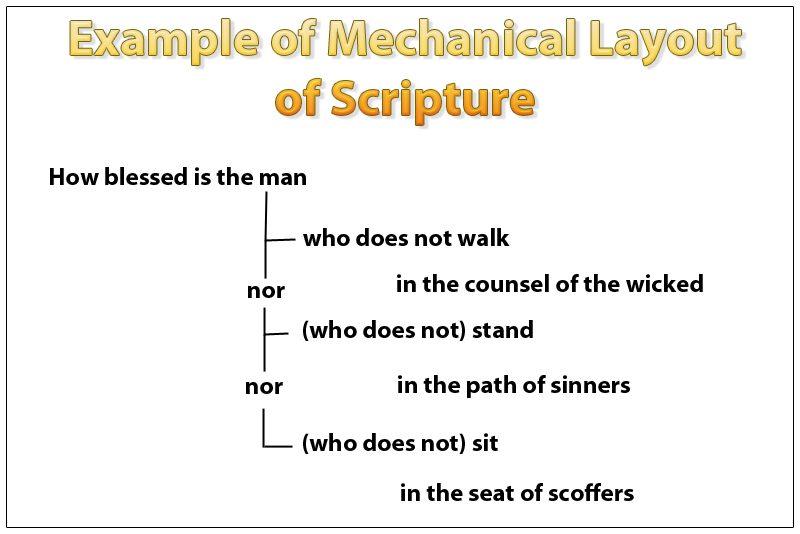How To Prepare A Sermon The First Step: The first step in preparing a sermon involves finding out what the passage of Scripture is all about. I generally preach through books of the Bible so I tend to outline the Scriptures in order to find the thought structures of the biblical writers.

How To Prepare A Sermon The First Step
There are three ways to outline a passage of Scripture. You can analyze the passage of Scripture with a grammatical outline in either the original language or English or you can analyze the passage of Scripture with a mechanical layout or you can outline a passage of Scripture with a conceptual outline.
1. The Grammatical Outline
Usually a grammatical outline will help you see the relationships of words in sentences. You will be able to identify the subject, verb, object and modifiers so that you can understand and clarify the development of the thought structures of the passage of Scripture.
When we use a grammatical outline of Hebrews 12:1-2, the thought structures becomes very obvious. The main verbal proposition is: We should run the race. Then the rest of the verses tell us how. We run the race with determination, inspiration (from those who have gone before us), freedom (by laying aside every weight and sin) and focus (on Jesus the author and finisher of our faith).
Once you have outlined Hebrews 12:1-2, you soon see the material forming an outline for your sermon.
You can learn more about grammatical outlining by purchasing Brian Chapell’s book, Christ-Centered Preaching or by purchasing Robertson McQuilkin’s Book, Understanding and Applying the Bible.
2. The Mechanical Layout
Not everyone is into grammatical outlining of the Scriptures; however, there is a simplified kind of outline that allows you to organize the structural thoughts of the Biblical writers. This is called a mechanical layout of the text.
A mechanical layout has two purposes. First, when you have finished the mechanical layout, you will see the primary elements of the passage and their relationship to each other. Second, you will see the flow of thought before you actually study each part of the sentence and paragraph.
A mechanical layout also has two practical advantages. First, it becomes an ideal worksheet for recording notes and observations. Second, it is a good intermediate step between studying the text and composing a teaching outline.
Nevertheless, the main reason for a mechanical layout of the text is to find the thought structures of the passage and how they relate to each other.
3. The Conceptual Outline
A conceptual outline is best when you are analyzing a large portion of Scripture or a large narrative. A conceptual outline will help you capture the broad features of the text. The main goal is to place supporting thoughts in subordinate positions to main ideas.
For example, you may ponder 2 Samuel 11-12:23. Your conceptual outline could follow this structure: 1) David disobeyed by committing adultery (11:1-5) and by committing murder (11:6-26). 2) God convicted David by sending a prophetic word (12:1-6), by identifying David’s sin (12:7-12) and by specifying David’s punishment (12:11-12, 14). 3) David repented by confessing his sin (12:13), by expressing sorrow (12:15-17), by accepting God’s discipline (12:18-23) and by renewing his relationship with God (12:20).
Concluding Comments:
Each of these outlines has their advantages. The important thing is that you learn to use them so that you can discover what the Scriptures are all about. How to prepare a sermon the first step is learning to outline the passage of Scripture.
How To Prepare A Sermon The First Step Resources
Chapell Bryan, 1994, Christ-Centered Preaching: Redeeming the Expository Sermon, Baker Book House, Grand Rapids, Michigan.
McQuilkin Robertson, 2009, Understanding and Applying the Bible, Moody Publishers, Chicago.